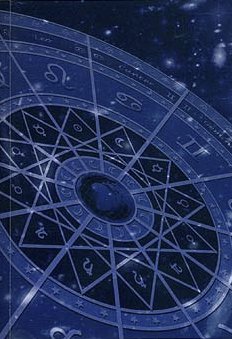Grahayuddha, Graha-yuddha: 10 definitions
Introduction:
Grahayuddha means something in Hinduism, Sanskrit. If you want to know the exact meaning, history, etymology or English translation of this term then check out the descriptions on this page. Add your comment or reference to a book if you want to contribute to this summary article.
In Hinduism
Jyotisha (astronomy and astrology)
Source: Wisdom Library: JyotiṣaGrahayuddha (ग्रहयुद्ध) refers to the “opposition of planets” and is the name of the twenty-eighth chapter of the Gārgīyajyotiṣa. The Gārgīyajyotiṣa is one of the most comprehensive of Garga’s texts and written in the form of a dialogue between Krauṣṭuki (Ṛṣiputra) and Garga discussing astral and other omens, comprising a total of sixty-two chapters (viz., graha-yuddha), known as aṅgas and summarized in the Aṅgasamuddiśa (“enumeration of the divisions”, introductory portion).
Source: Wisdom Library: Brihat Samhita by VarahamihiraGrahayuddha (ग्रहयुद्ध) refers to “planetary conjunctions”, according to the Bṛhatsaṃhitā (chapter 5), an encyclopedic Sanskrit work written by Varāhamihira mainly focusing on the science of ancient Indian astronomy astronomy (Jyotiṣa).—Accordingly, “Lunar and solar eclipses terminate in ten ways [...] If there should appear either a rainbow, or a comet club-like in shape, people, afflicted with hunger, will suffer from foreign yoke; if there should be either planetary conjunctions [i.e., grahayuddha] or cometary appearances princes will be at war with one another. If there should occur a fall of good rain within the said period, there will be prosperity in the land and the evils described above will disappear”.

Jyotisha (ज्योतिष, jyotiṣa or jyotish) refers to ‘astronomy’ or “Vedic astrology” and represents the fifth of the six Vedangas (additional sciences to be studied along with the Vedas). Jyotisha concerns itself with the study and prediction of the movements of celestial bodies, in order to calculate the auspicious time for rituals and ceremonies.
Purana and Itihasa (epic history)
Source: archive.org: Shiva Purana - English TranslationGrahayuddha (ग्रहयुद्ध) refers to the “clashing of planets”, according to the Śivapurāṇa 2.3.15 (“The penance and reign of Tārakāsura”).—Accordingly, as Brahmā narrated: “[...] At the same time, several phenomena of evil portent forboding misery and distress happened, when the son of Varāṅgī was born making the gods miserable. [...] Idols and images of deities appeared to cry and fly up. Even when there was no gale, trees fell down. Planets in the sky clashed with one another [i.e., grahayuddha]. O excellent sage, these and similar portending phenomena occurred: Ignorant persons thought the submersion of the whole universe was imminent. [...]”.

The Purana (पुराण, purāṇas) refers to Sanskrit literature preserving ancient India’s vast cultural history, including historical legends, religious ceremonies, various arts and sciences. The eighteen mahapuranas total over 400,000 shlokas (metrical couplets) and date to at least several centuries BCE.
Languages of India and abroad
Sanskrit dictionary
Source: DDSA: The practical Sanskrit-English dictionaryGrahayuddha (ग्रहयुद्ध).—opposition of planets.
Grahayuddha is a Sanskrit compound consisting of the terms graha and yuddha (युद्ध).
Source: Cologne Digital Sanskrit Dictionaries: Cappeller Sanskrit-English DictionaryGrahayuddha (ग्रहयुद्ध).—[neuter] opposition (lit. strife) of the planets.
Source: Cologne Digital Sanskrit Dictionaries: Aufrecht Catalogus Catalogorum1) Grahayuddha (ग्रहयुद्ध) as mentioned in Aufrecht’s Catalogus Catalogorum:—the 51 st and 52 d Pariśiṣṭa of the Av. W. p. 92. 93.
2) Grahayuddha (ग्रहयुद्ध):—Pariś. 51 of the Av. Tb. 214.
Source: Cologne Digital Sanskrit Dictionaries: Monier-Williams Sanskrit-English Dictionary1) Grahayuddha (ग्रहयुद्ध):—[=graha-yuddha] [from graha > grah] n. = -marda, [Atharva-veda.Pariś.; Varāha-mihira’s Bṛhat-saṃhitā]
2) [v.s. ...] Name of [Varāha-mihira’s Bṛhat-saṃhitā xvii.]
[Sanskrit to German]
Sanskrit, also spelled संस्कृतम् (saṃskṛtam), is an ancient language of India commonly seen as the grandmother of the Indo-European language family (even English!). Closely allied with Prakrit and Pali, Sanskrit is more exhaustive in both grammar and terms and has the most extensive collection of literature in the world, greatly surpassing its sister-languages Greek and Latin.
Nepali dictionary
Source: unoes: Nepali-English DictionaryGrahayuddha (ग्रहयुद्ध):—n. opposition or war between certain planets;
Nepali is the primary language of the Nepalese people counting almost 20 million native speakers. The country of Nepal is situated in the Himalaya mountain range to the north of India.
See also (Relevant definitions)
Partial matches: Graha, Yuddha.
Full-text (+17): Yayin, Ullekha, Grahamardana, Samsarjana, Jayin, Marda, Catushprakara, Paura, Asannakrama, Parashara, Mantrivirodha, Anyonya, Anyonyapriti, Parasharamuni, Atidura, Samagama, Mahakula, Vrishtivinasha, Parshnigraha, Bhavishya.
Relevant text
Search found 2 books and stories containing Grahayuddha, Graha-yuddha; (plurals include: Grahayuddhas, yuddhas). You can also click to the full overview containing English textual excerpts. Below are direct links for the most relevant articles:
Brihat Samhita (by N. Chidambaram Iyer)
Bhagavati-sutra (Viyaha-pannatti) (by K. C. Lalwani)
Chapter 7: Lokapāla Somadeva < [Book 3]